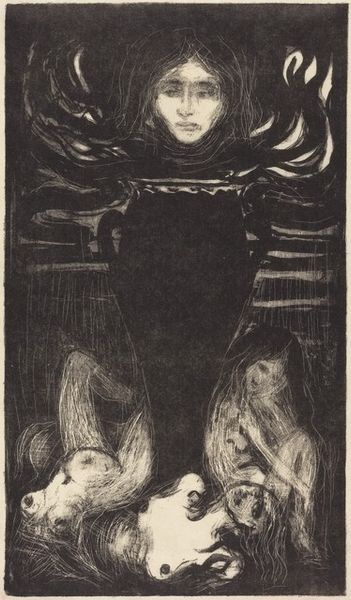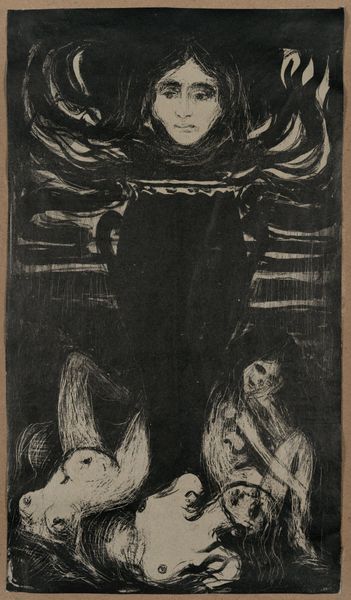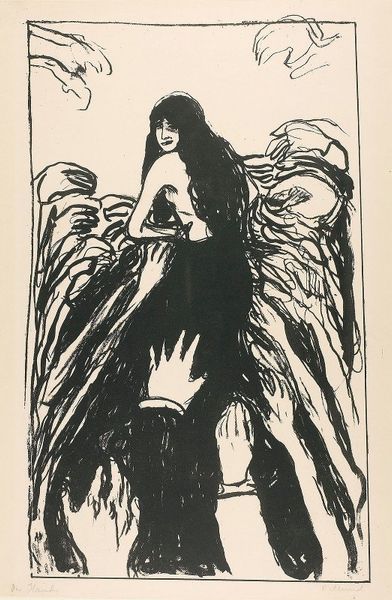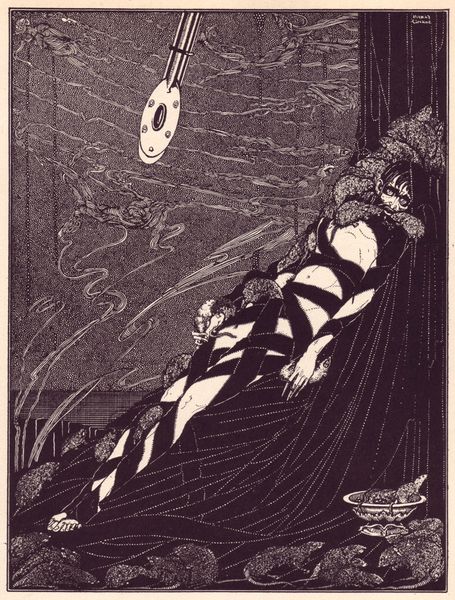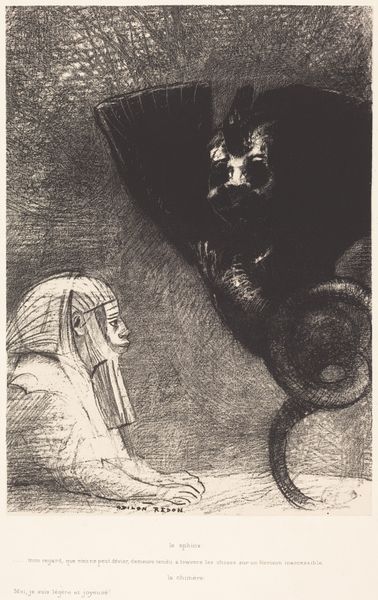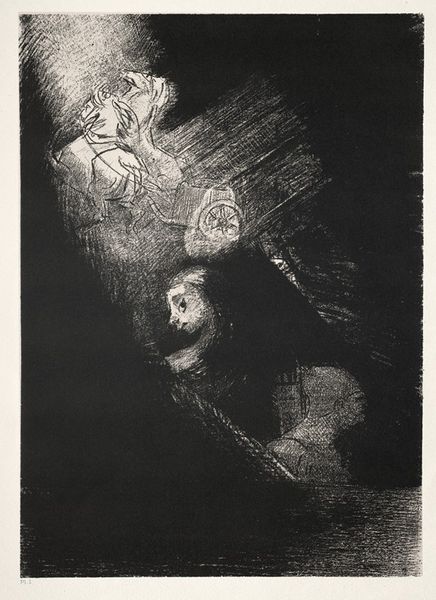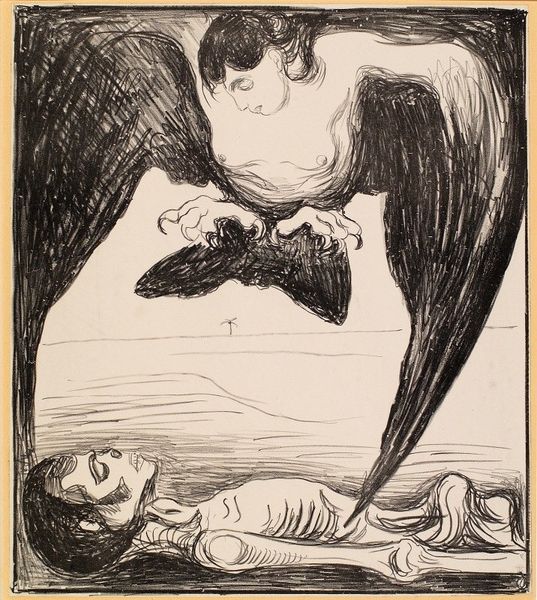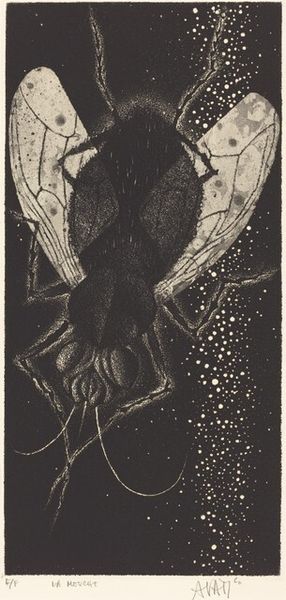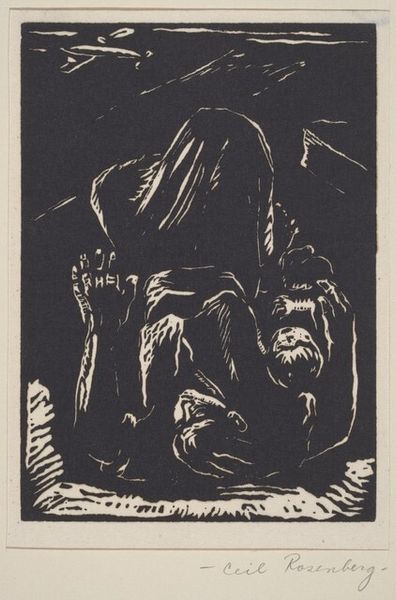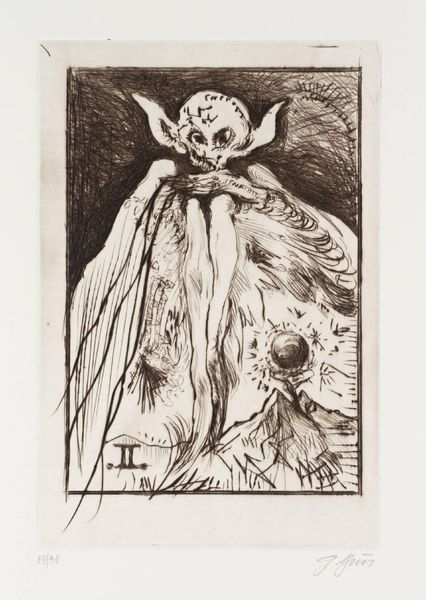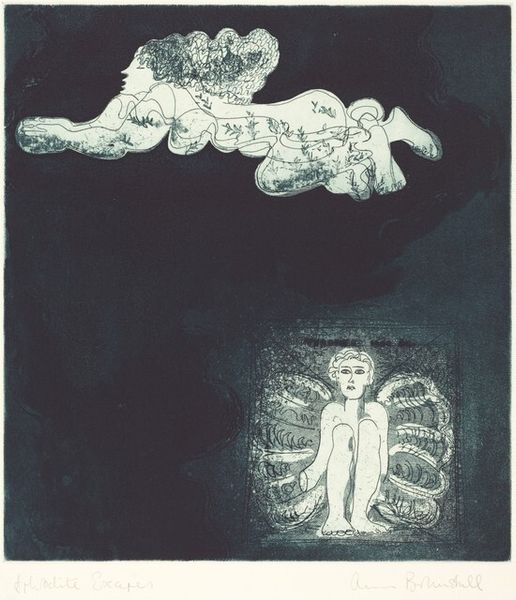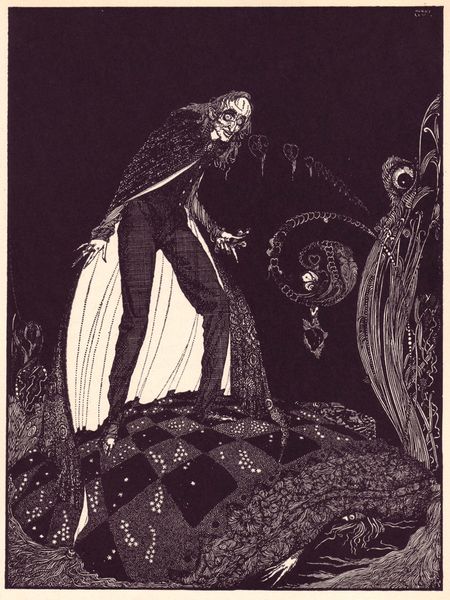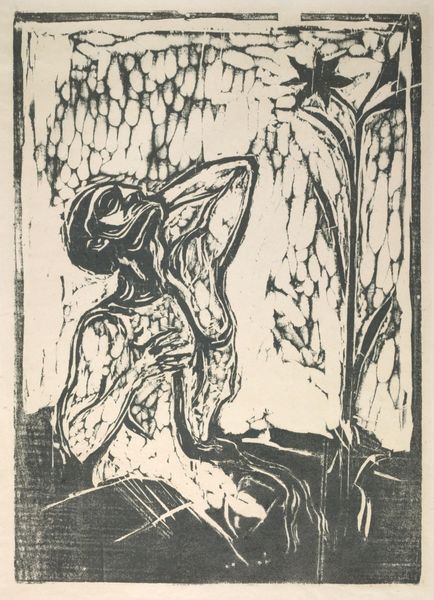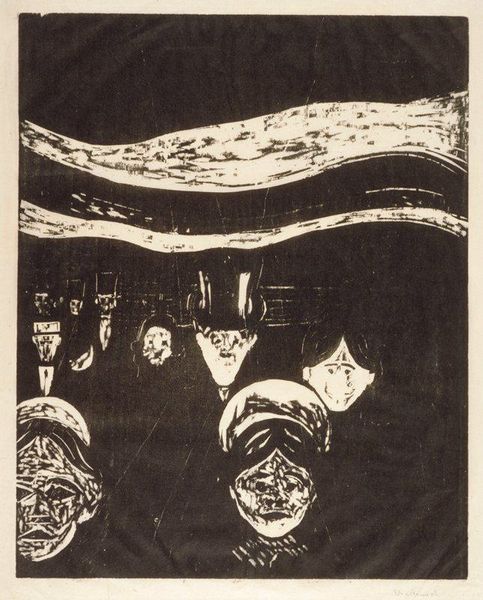
Copyright: Public Domain: Artvee
Curator: Good morning, everyone. We are now standing before Edvard Munch's lithograph entitled “The Urn,” created in 1897. Editor: It has an undeniable sense of morbidity, a very stylized gothic gloominess achieved with sharp, almost violent linework. It feels very… burdened. Curator: Munch's prints are often loaded with symbolic meaning. Consider the central urn, a recurring motif throughout art history that has often been associated with loss, but also, preservation and memory. Above it floats a female head, almost serene amidst the swirling darkness. The lower register, in contrast, reveals suffering, what appears to be women in agony. Editor: It is interesting how Munch is playing with contrasting gendered positions here, representing women almost as both containers and victims. Their expressions seem to reveal something about women’s roles within societal narratives around grief and even domesticity, almost as a passive receiver of the suffering from this period. I wonder to what extent this commentary speaks to the way patriarchal structures at that time would treat those experiencing loss, essentially like vessels to contain negative emotions. Curator: That’s a very insightful reading. I’m thinking of Munch's own experiences of loss – his mother and sister died when he was quite young. It has been argued that these deeply traumatic experiences informed much of his work. And, like many artists from this period, Munch engages with fin-de-siècle themes: anxiety, alienation, sexuality, and death. These symbols would have carried a very palpable weight to the contemporaneous viewer. Editor: Agreed. Also, there’s something inherently subversive in how Munch seems to destabilize what grief should look like in a female body. There’s an invitation for the viewer to consider agency in expressions of loss that’s very interesting to me, and seems like it still needs further investigation today. Curator: It highlights, again, the enduring power of symbols and imagery, particularly concerning death and mourning. Editor: Right, it resonates beyond its own time by inviting further discussions around gender, trauma, and resilience.
Comments
No comments
Be the first to comment and join the conversation on the ultimate creative platform.
